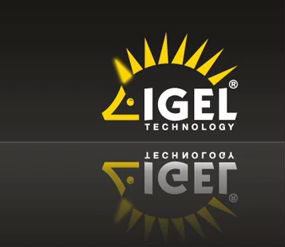 IGEL-HedgehogI recently wrote a post that outlined the Citrix story in terms of the core problem that they solve and how that lines up with Hogan Consulting Group and their methodology.
IGEL-HedgehogI recently wrote a post that outlined the Citrix story in terms of the core problem that they solve and how that lines up with Hogan Consulting Group and their methodology.
HCG engineers, much like their Citrix counterparts, are very focused on providing solutions which add value. The traditional model of IT would see a server refresh as an opportunity to put in new hardware, current versions of applications and “provide all current functionality”. The model embraced by HCG would use the server refresh as an opportunity to asses all current practices, engage with business owners and determine how best to deliver the services currently provided in a way which puts IT as a competitive advantage for the client.
Tasks which are done repetitively, should be evaluated for a path to single instance. Tasks which require physical presence should at a minimum be made remote. These are just tip of the iceberg common sense examples of how virtualization can increase efficiency. The disconnect tends to occur when you talk about hardware, hardware rarely comes with any added efficiencies and is often accepted as being a source of “manual labor” and cost that is inevitable. IGel is one of the first companies to truly turn this problem sideways and deliver the unexpected. Using IGel as endpoints in a network delivers true value monetarily as well as increased efficiency for the administrative staff.
Virtual Endpoints at a Glance
Virtualization (and to some degree remote desktop services) were brought about to (among other things) centralize administrative efforts and reduce the cost of hardware investments. The administrative efforts were well served by this, often a complex organization with hundreds of users could have three or four “master images” that software could be apllied to and then rolled out at once, saving hundreds of man hours. Hardware was a little different though, companies could use thin clients which were much less expensive but they lacked the ability to be multi purpose (eg…. if an executive logged into a kiosk on the manufacturing floor, he would be served the manufacturing image) and more importantly they were very manual to configure. The cost savings for a typical thin client could easily be exceeded in added cost of ownership. These issues have caused many environments to continue utilizing PCs as their endpoints despite needing increased hardware specialization among their staff, often causing both a server group and a desktop group to be required.
IGel’s Innovative Response
Now we get to why IGel is a big deal for us at HCG, the way in which they align themselves with practices such as those employed by Hogan’s Engineers. IGel has created a line of thin clients which are universal in terms of scope and application, spanning the entire gamut from greenscreen terminal apllications to multi-displayed touch screen units. Their entire line is built from conception to implementation to differentiate along the following five points:
Manageability - Their entire product line includes (at no cost) their management suite, which gives an admin the ability to create multiple profiles and apply them in as simple as a drag and drop manner if desired. They link to an organizations authentication provider (AD or LDAP) and can even have multiple connection profiles… remember our executive on the manufacturing floor? He would get delivered the appropriate resolution, connect to the appropriate server etc… based on his credentials. All of that is configurable from the IT provider’s office. Adaptability – The simple devices provided by other vendors as thin clients “did a thing” and then the organization tried to match their practices to that thing. IGel’s Universal Desktop line have nearly as many options as are currently consumed in a modern IT environment. Everything from redirected multimedia to natively handling dictation streams. The organization “does a thing” and the IGel admin spends a few minutes up front making sure that the IGel matches their practices.
Security and Stability – The IGel units are dependable, free from exploits and in the words of one major client “The only thin client to specifically pass an intensive PCI audit”. There is no “give and take” about security with these, they even natively support some SSO options. Support – IGel comes from the manufacturer with a five year warranty over everything, afterwards they have three more years of software support. The reason they can afford to do this is that they are reliable enough to do so. In terms of supporting your own environment with your own resources, IGel is an enabler. In difficult user calls, the admin can click the “shadow” button and instantly be sharing the users screen. Once again, eliminating the trips out of the NOC.
Software Currency – IGel maintains a strict commitment to delivering the latest versions of all the main delivery mechanisms out there. Having seen all of these things demonstrated on the IGel (including the ability to repurpose old computers as an IGel client) have led us to believe that IGel is an ideal way to complete the entire package of efficiencies in terms of physical delivery with HCG deployments. If you are currently using thin clients or perhaps considering a migration from Windows XP, please give us a call and see how much efficiency and value we can help you get from your project.

